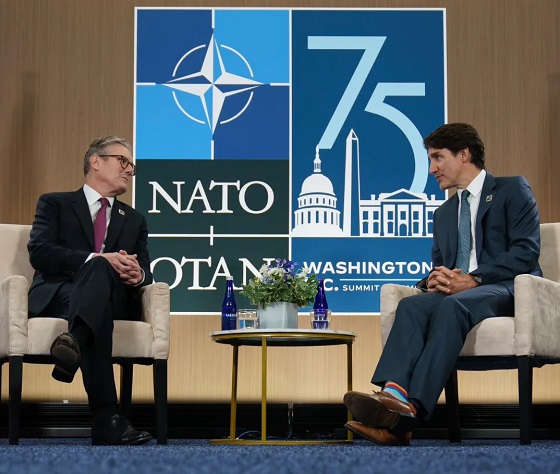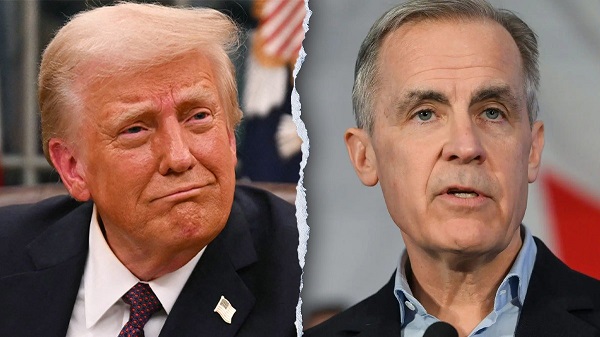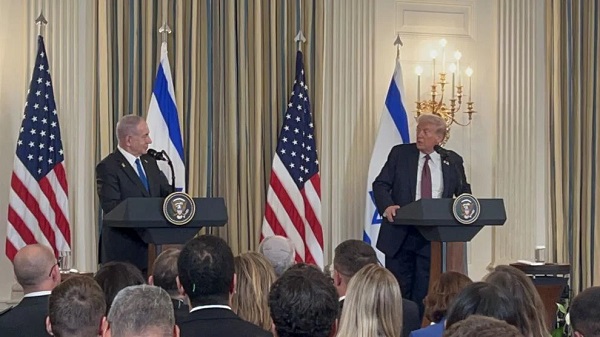Opinion
New Brunswick premier bans ‘sex-ed’ group from schools after presentation on porn, immoral sex acts
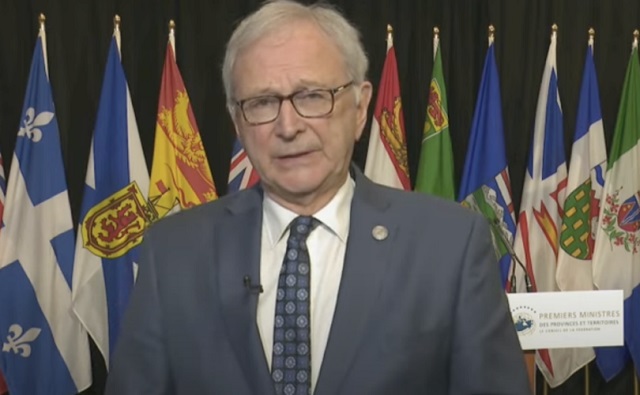
New Brunswick Premier Blaine Higgs
From LifeSiteNews
Sharing slides of a presentation given by a third-party group to New Brunswick school children that contained questions about pornography, masturbation and ‘anal’ sex, Premier Blaine Higgs said he is ‘furious’ and that the group has been banned, ‘effective immediately.’
Once again, New Brunswick Premier Blaine Higgs is showing Canadian politicians how to effectively advocate for common sense socially conservative policies. On May 24, he tweeted out a photograph of a slide from a sex education presentation given in a New Brunswick school. The slide featured red lips closing on a lollipop, the title “Thirsty For The Talk,” and the questions: “Is it normal to watch porn like people watch TV series?”; “Do girls masturbate?” and: “Is it good or bad to do anal?”
Premier Higgs posted his response:
A number of concerned parents have shared with me photos and screenshots of clearly inappropriate material that was presented recently in at least four New Brunswick high schools.
To say I am furious would be a gross understatement.
This presentation was not part of the New Brunswick curriculum and the content was not flagged for parents in advance. My office has been told by Department of Education officials that this was supposed to be a presentation on HPV.
However, the group shared materials well beyond the scope of an HPV presentation. The fact that this was shared shows either improper vetting was done, the group misrepresented the content they would share … or both.
This group will not be allowed to present again at New Brunswick schools, effective immediately.
Our government will have further discussions about whether additional rules about third-party presentations need to be updated.
Children should be protected, and parents should be respected.
I want parents to know that we are with you. We will continue to make decisions based on the principle that parents need to be aware of what is happening at schools, so they can make informed parenting decisions.
Do you think we need stronger rules about third-party presentations in our schools? I want to hear directly from you. Take our survey by clicking here:
Presentations like this – and indeed, presentations containing far more graphic material – are common in Canadian public schools. Plenty of schools actually feature in-house content that is substantially worse than this. But every time a debate about explicit, how-to sexual content in schools erupts, progressive activists and politicians dodge the issue by retreating to vagueness. Instead of defending the idea of an activist group like Planned Parenthood coming in to talk to students about why anal sex is just fine, they insist that this content is essential for “inclusion” and “tolerance” while scrupulously avoiding the specifics. Inevitably, most of the press coverage of the debate fails to include the specifics of what actually upset parents in the first place, and instead presents objectors as opposed to common sense progressive educational policies.
When the explicit content in question is described, however, progressives are denied the opportunity to defend their policy of encouraging and introducing fringe sex acts to children in vague, friendly, liberal-sounding buzzwords. Last year, for example, Planned Parenthood got caught handing out graphic “ABC” sex cards to students as young as 14 that explained, for example, how they could engage in “yellow and brown showers” (urinating and defecating on their partners). Plenty of other dangerous and immoral sex acts are encouraged, with Planned Parenthood’s presentation stating that each sexual urge must be “affirmed” – the amorality, in short, was up front.
But when the sex cards were covered in a handful of press outlets, parents were outraged the Saskatchewan government got involved. Planned Parenthood is now banned from presenting in Saskatchewan schools (although it was never explained why they were invited to do so in the first place). Planned Parenthood was reportedly confused by this decision, as they didn’t see the problem with the content they had distributed – but the only reason they were denied access to Canadian kids is because the graphic sexual information they were distributing was exposed publicly.
Premier Blaine Higgs appears to have realized that to implement common sense policies, exposing what is actually being taught in public schools is the only way forward. Progressives cannot be allowed to hide behind buzzwords like “toleration” and “inclusion.” Politicians and activists – including the prime minister – who wish to defend this content should be made to defend specifics, and the only way to force them to do that is to show the public what the kids are being taught in schools.
Education
Classroom Size Isn’t The Real Issue
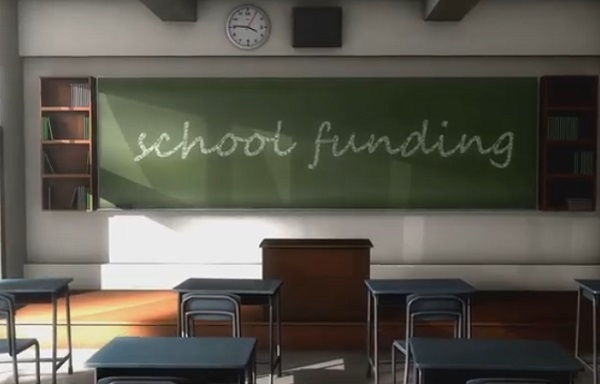
From the Frontier Centre for Public Policy
The real challenge is managing classrooms with wide-ranging student needs, from special education to language barriers
Teachers’ unions have long pushed for smaller class sizes, but the real challenge in schools isn’t how many students are in the room—it’s how complex those classrooms have become. A class with a high proportion of special needs students, a wide range of academic levels or several students learning English as a second language can be far more difficult to teach than a larger class where students are functioning at a similar level.
Earlier this year, for example, the Elementary Teachers’ Federation of Ontario announced that smaller class sizes would be its top bargaining priority in this fall’s negotiations.
It’s not hard to see why unions want smaller classes. Teaching fewer students is generally easier than teaching more students, which reduces the workload of teachers. In addition, smaller classes require hiring more teachers, and this amounts to a significant financial gain for teachers’ unions. Each teacher pays union dues as part of membership.
However, there are good reasons to question the emphasis on class size. To begin with, reducing class size is prohibitively expensive. Teacher salaries make up the largest percentage of education spending, and hiring more teachers will significantly increase the amount of money spent on salaries.
Now, this money could be well spent if it led to a dramatic increase in student learning. But it likely wouldn’t. That’s because while research shows that smaller class sizes have a moderately beneficial impact on the academic performance of early years students, there is little evidence of a similar benefit for older students. Plus, to get a significant academic benefit, class sizes need to be reduced to 17 students or fewer, and this is simply not financially feasible.
In addition, reducing class sizes means spending more money on teacher compensation (including salaries, pensions and benefits). Also, it leads to a decline in average teacher experience and qualifications, particularly during teacher shortages.
As a case in point, when the state of California implemented a K-3 class-size reduction program in 1996, inexperienced or uncertified teachers were hired to fill many of the new teaching positions. In the end, California spent a large amount of money for little measurable improvement in academic performance. Ontario, or any other province, would risk repeating California’s costly experience.
Besides, anyone with a reasonable amount of teaching experience knows that classroom complexity is a much more important issue than class size. Smaller classes with a high percentage of special needs students are considerably more difficult to teach than larger classes where students all function at a similar academic level.
The good news is that some teachers’ unions have shifted their focus from class size to classroom complexity. For example, during the recent labour dispute between the Saskatchewan Teachers’ Federation (STF) and the Saskatchewan government, the STF demanded that a classroom complexity article be included in the provincial collective agreement. After the dispute went to binding arbitration, the arbitrator agreed with the STF’s request.
Consequently, Saskatchewan’s new collective agreement states, among other things, that schools with 150 or more students will receive an additional full-time teacher who can provide extra support to students with complex needs. This means that an extra 500 teachers will be hired across Saskatchewan.
While this is obviously a significant expenditure, it is considerably more affordable than arbitrarily reducing class sizes across the province. By making classroom complexity its primary focus, the STF has taken an important first step because the issue of classroom complexity isn’t going away.
Obviously, Saskatchewan’s new collective agreement is far from a panacea, because there is no guarantee that principals will make the most efficient use of these additional teachers.
Nevertheless, there are potential benefits that could come from this new collective agreement. By getting classroom complexity into the collective agreement, the STF has ensured that this issue will be on the table for the next round of bargaining. This could lead to policy changes that go beyond hiring a few additional teachers.
Specifically, it might be time to re-examine the wholesale adoption of placing most students, including those with special needs, in regular classrooms, since this policy is largely driving the increase in diverse student needs. While every child has the right to an education, there’s no need for this education to look the same for everyone. Although most students benefit from being part of regular academic classes, some students would learn better in a different setting that considers their individual needs.
Teachers across Canada should be grateful that the STF has taken a step in the right direction by moving beyond the simplistic demand for smaller class sizes by focusing instead on the more important issue of diverse student needs.
Michael Zwaagstra is a senior fellow with the Frontier Centre for Public Policy.
Frontier Centre for Public Policy
Canada’s Democracy Is Running On Fumes

From the Frontier Centre for Public Policy
By Gerry Bowler
Prime ministerial control, weak Parliament and a dependent press have left voters with little more than a ritual trip to the ballot box
Canadians take comfort in U.S. dysfunction, but the foundations of our own democracy are already showing serious strain
Canada isn’t the strong democracy we like to believe. Behind the peaceful elections and parliamentary rituals lies a system where power is concentrated in the hands of one person: the prime minister.
Since Confederation, Canada has avoided coups and revolutions. Governments have changed hands through orderly elections, a record many countries envy. On the surface, it looks like a stable democracy.
But look closer, and the cracks show.
The 1982 Constitution enshrined a Charter of Rights and Freedoms promising equality for all, and then immediately allowed governments to override those rights with the “notwithstanding clause,” which lets legislatures pass laws even if they conflict with the Charter.
The Emergencies Act, used for the first time during the 2022 trucker protests, gives Ottawa extraordinary powers to suspend freedoms and compel action. Its use included freezing bank accounts without court orders and compelling tow truck operators to provide their services to remove the vehicles, measures that left many Canadians unsettled about how quickly their rights can be curbed.
Parliamentary practice has also made the prime minister one of the most powerful elected leaders in the world. He decides who can run under his party’s banner, when MPs may speak and who sits in cabinet. He appoints the heads of federal agencies, judges, ambassadors and senators. In theory, these powers rest with the Crown. In practice, it is the prime minister who even chooses the governor general. Unlike Britain, where leaders must contend with internal party democracy, Canadian prime ministers enforce tight discipline, leaving backbench MPs with little influence.
This isn’t just theory. Pierre Trudeau’s iron grip on his caucus, Stephen Harper’s strict message control and Justin Trudeau’s demands for near-total loyalty all show how party discipline can stifle independent voices in Parliament.
When opposition parties pose a threat, a prime minister can simply prorogue Parliament, temporarily shutting it down without dissolving it, and avoiding debate. Jean Chrétien, Harper and Trudeau have all used this tactic when pressure mounted. After an election, the first sitting can be delayed for nearly a year. Even when Parliament does sit, question period, once meant to hold governments accountable, has become little more than a trading of insults. Canadians who tune in often come away with the impression of theatre, not oversight.
Parliament’s supremacy has been further eroded by section 52(1) of the Constitution, which gives the Supreme Court power to strike down laws passed by elected representatives and create new rights and obligations in their place. Courts have struck down laws on abortion, safe-injection sites and mandatory minimum sentences, reshaping policy without a vote in the House of Commons.
Meanwhile, the press, long considered democracy’s watchdog, now relies heavily on government subsidies such as the federal media bailout program. Sold as a lifeline to preserve journalism, it has raised unavoidable questions about independence. Critics argue that when newsrooms depend on Ottawa for survival, it blunts their willingness to challenge the same government that funds them. In a country where a strong, adversarial press is essential, the appearance of influence is almost as damaging as direct control.
All of this has reduced Canadian democracy to little more than a ritual trip to the ballot box every four or five years. With power so centralized, many voters understandably wonder whether their participation matters. No surprise, then, that a third of Canadians don’t bother to vote, with even lower turnout in provincial and municipal elections.
Canadians often look south at the polarization and chaos in American politics and congratulate ourselves for avoiding the same fate. But that smugness is dangerous. The U.S. reminds us how quickly democratic institutions can fray when power is abused and trust collapses. Canada is not immune.
The warning signs are here. Keep ignoring them, and our democracy will collapse: not with a bang but with a whimper.
Gerry Bowler is a Canadian historian and a senior fellow of the Frontier Centre for Public Policy.
-

 Business1 day ago
Business1 day agoThe Grocery Greed Myth
-

 COVID-191 day ago
COVID-191 day agoTamara Lich says she has no ‘remorse,’ no reason to apologize for leading Freedom Convoy
-

 Crime1 day ago
Crime1 day agoCanada’s safety minister says he has not met with any members of damaged or destroyed churches
-

 Business1 day ago
Business1 day agoTrump Warns Beijing Of ‘Countermeasures’ As China Tightens Grip On Critical Resources
-

 International1 day ago
International1 day agoTrump gets an honourable mention: Nobel winner dedicates peace prize to Trump
-

 Business1 day ago
Business1 day agoTax filing announcement shows consultation was a sham
-

 Frontier Centre for Public Policy1 hour ago
Frontier Centre for Public Policy1 hour agoCanada’s Democracy Is Running On Fumes
-

 Education1 hour ago
Education1 hour agoClassroom Size Isn’t The Real Issue

